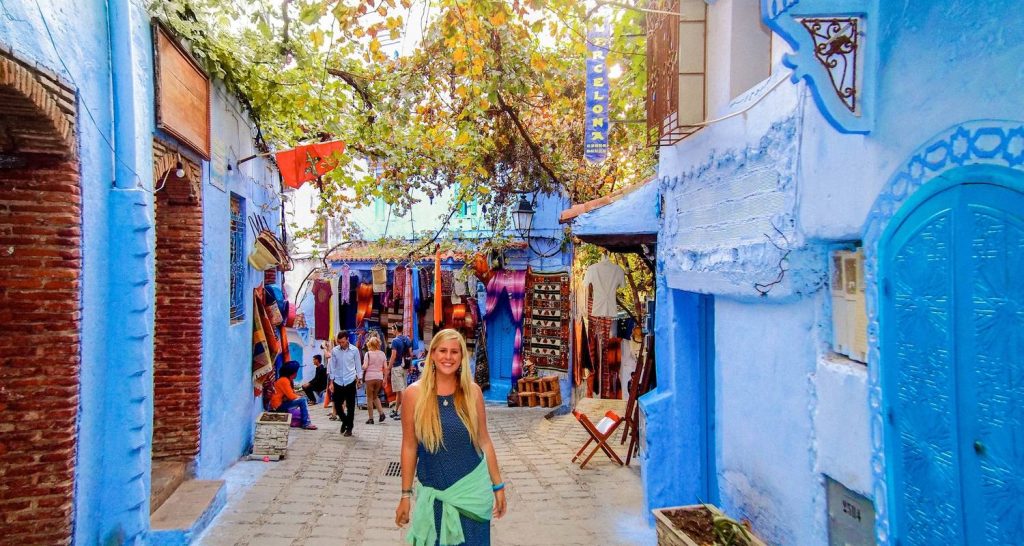Chefchaouen is an enchanting town sitting at the foot of the Rif Mountains. It is a unique place to visit for various reasons: it is small and manageable yet friendly to tourists, the mountain air and atmosphere are relaxing, and one can catch a glimpse of rural life while hiking in the surrounding mountains and hangs like crescent form high twin mountains. The medina, a mass of red tiled roofs, crisp whitewashed walls and elegant architecture details, is a precious 15th century relic from the Muslim civilization of Andalusia. The cemetery immediately above the town creates a fine contrast between the wilderness of graves and the tightly packed medina. Surrounded on all points of the compass by the Djellaba Mountains, this compact town is a popular but still friendly destination.
Chefchaouen was founded in 1471 as a fortress for the faith, a secure mountain citadel from which to assault the growing power of Portugal. It was established by a native Idrissid prince, Sheriff Moulay Ali bin Rachid, who used the village as a base for Guerilla attacks on the Portuguese, who were expanding southward from their coastal garrison at Ceuta. This anti-European sentiment increased over subsequent decades with the arrival of Jewish and Muslim refugees fleeing the Christian reconquest of Spain. For centuries onward, Chefchaouen increasingly turned inward, welcoming only Muslim and Jewish pilgrims who had journeyed to pay homage to the surrounding saints and locking the gates of its protective walls each night. The city largely settled by the flood of skilled Andalusian refugees that were fleeing from the Catholic conquest of the old Muslim kingdom of Granada. The Andalusians were responsible for the rapid and elegant growth of the town while the sherif and his heirs ruled over much of northern Morocco. The Idrissid emirate of Chefchaouen, Tetouan and Targa was recognized by the sultans in fez until both were swep away by the Saadian dynasty in the mid-16th century. The last emir escaped and died a pilgrim at Mecca.
By the time the Spanish made their way here in 1920, only three Westerners had braved entering Chefchaouen: Frenchman Charles de Foucauld spent an hour in the village – disguised as a rabbi – in 1883; Walter Harris, Morocco correspondent for the London Times in 1889; and American missionary William Summers, who was poisoned here in 1892. The Spanish were amazed to find the village Jews still speaking a language that hadn’t been heard in Spain for 400 years.
Now well and truly discovered, Chefchaouen still retains its village atmosphere and strong Riffian culture combined with a lingering Spanish influence. Here you will see the distinctive dress of the women of the Rif: a red-and-white-striped overskirt, and large conical straw hat with wool bobbles.

